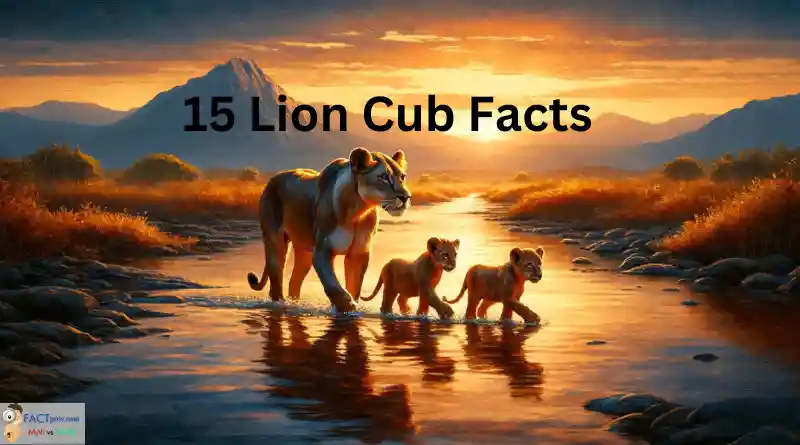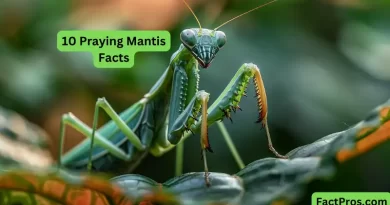15 Facts About Lion Cubs: Insights into the Lives of the Young Kings
Lion cubs, possess an array of qualities and traits that are as intriguing as they are endearing. They are born into the harsh yet structured environment of a pride. These cubs embark on a journey from helpless infancy to regal maturity, facing numerous challenges along the way. Having a light brown coat often speckled with spots and stripes, lion cubs are typically sheltered by their lioness mothers in dens to protect them from the threats within their natural habitat.
As they grow, lion cubs learn the intricate social dynamics of their pride and develop hunting techniques crucial for their survival. Yet, their path to adulthood is fraught with trials. From natural predators and scarcity of food to the ongoing threat of habitat loss and conflict with humans. Understanding the lifecycle, behaviors, and the conservation issues faced by lion cubs is essential for appreciating these magnificent creatures and ensuring their continued existence in the wild.
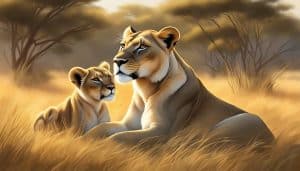
Key Takeaways
- Lion cubs are integral to the pride’s structure, learning essential survival skills from a young age. Their development is crucial for the future dynamics and survival of the pride.
- Overcoming various challenges is a part of a cub’s growth, influencing their development into adulthood. These challenges include learning to hunt, navigating social dynamics within the pride, and, for males, eventually leaving the pride to seek their own territory.
- The conservation of lion populations is critical, highlighting the need for awareness and intervention to protect these majestic animals. Conserving their habitats and reducing threats from human activities are vital steps toward ensuring their survival.
- Early interactions shape future survival skills. Lion cubs’ play mimics hunting and fighting techniques, essential for their survival as adults. These activities are not only crucial for their physical development but also for learning social cues within the pride.
- Cub petting and captivity issues raise ethical concerns. Misconceptions about captive breeding and cub petting contributing to conservation efforts need addressing to prevent exploitation and ensure ethical treatment.
- Educational and protective measures are essential for coexistence. Understanding lion behavior and promoting safe practices can minimize human-lion conflicts, especially in areas where their habitats overlap with human settlements.
Life Cycle of Lion Cubs
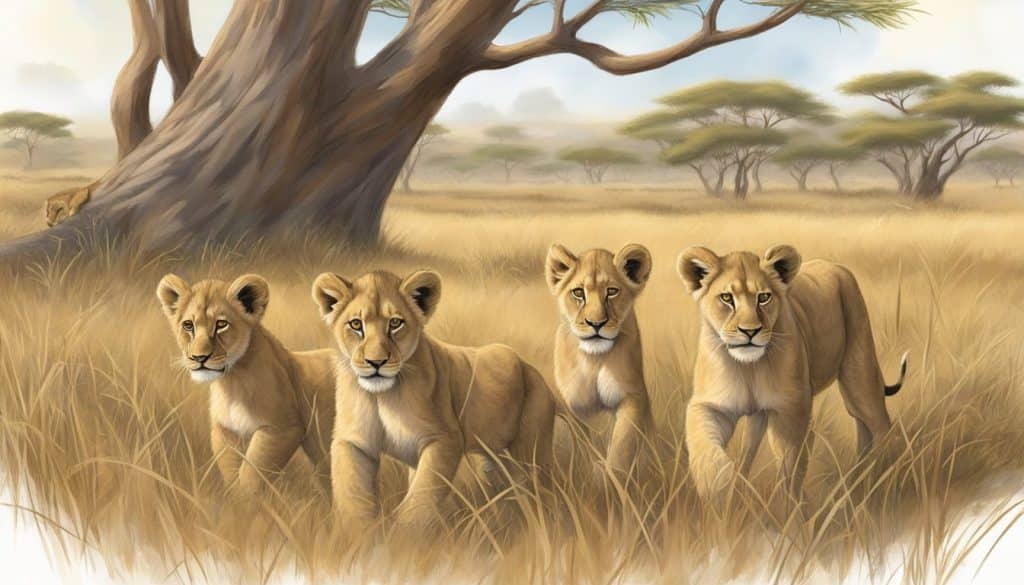
The life cycle of lion cubs is a journey from total dependence to fierce independence. It is marked by a series of crucial growth milestones and survival challenges starting from birth.
Birth and Early Days
Lion cubs are typically born in a hidden den. This is where they are kept isolated from the rest of the pride for their safety. They come into the world blind and completely vulnerable, relying on their mother’s milk for nourishment. Their eyes open at around 3 to 11 days after birth, and they begin to explore their immediate surroundings shortly thereafter.
Growth Milestones
The period of weaning begins at about 10 weeks, with complete weaning occurring by 10 months. Growth during these early months is rapid, as cubs transition from milk to small portions of meat provided by their mother. They develop their motor skills through play, which is also essential for their social development. Hunting skills are gradually learned and typically achieved by two years of age.
Path to Independence
Cubs must navigate a complex social environment while mastering survival skills. By the age of two, they actively participate in hunts, and at around two to three years old, they begin the path to independence. At this stage, young males particularly may leave their birth pride to seek their own territories, while females may stay with their mother’s pride or form new groups with other females.
Physical Characteristics
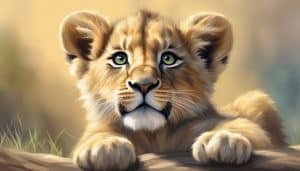
Lion cubs exhibit a range of physical characteristics from birth through their development into adolescent lions. These traits reflect their genetic heritage and their evolution as premiere predators in the wild.
Size and Development
At birth, lion cubs typically weigh around 3 to 4 pounds and measure about 13 to 15 inches in length. As they grow, there is a marked difference between genders; by adulthood, males can reach a size and weight of 330 to 550 pounds and a length of up to 7 to 9 feet, excluding their tails, while females tend to be slightly smaller.
Unique Features
Lion cubs are born with a light brown coat that may showcase faint spots and stripes, which fade as they mature. Their appearance is not only adorable but also functional for camouflage. Lion cubs experience a rapid development of teeth and strength. When their milk teeth appear, usually within the first two weeks, it prepares them for a transition to solid foods. Their playful behavior contributes to the growth of their muscular and skeletal structure, honing the strength required for survival.
Social Structure and Behaviors
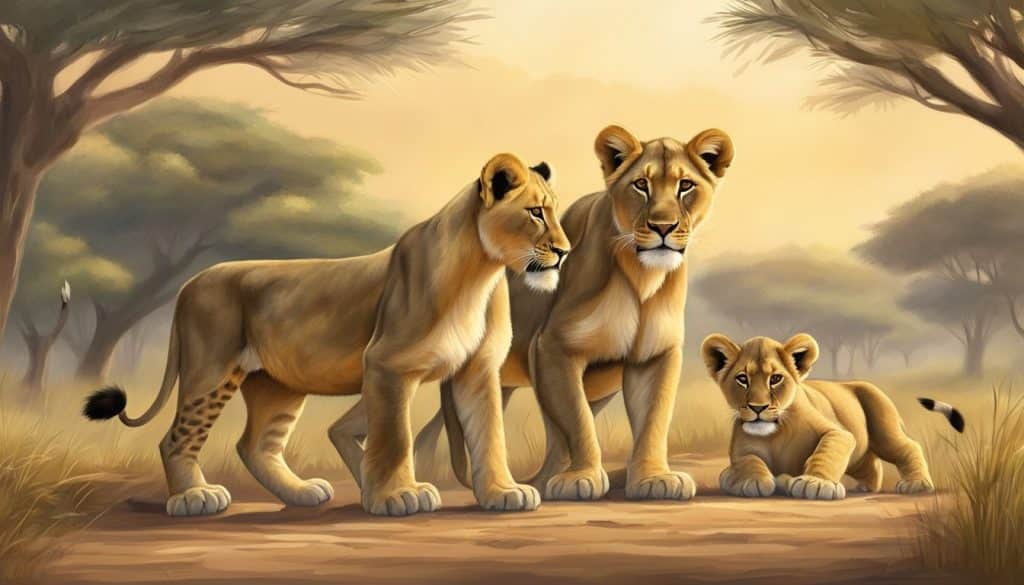
The social structure and behaviors of lion cubs are essential aspects of their survival and integration into lion society. Through family dynamics, communication and play, and training for survival, they learn the intricacies of pride life and their roles within it.
Family Dynamics
Lion cubs are born into a complex social structure known as a pride, which is centered around a group of related females, their cubs, and a few male lions. The lionesses within the pride are often responsible for the rearing and protection of the cubs, fostering a nurturing environment where the young can grow. Male lions, though less involved in the day-to-day care, play a pivotal role in defending the pride’s territory from intruders and rival males, thereby securing a safe space for the cubs to thrive.
Communication and Play
Cubs learn vital communication skills through play, which is not only a form of entertainment but also a critical part of their development. Playful tussling teaches them the coordination and strength they will need as adults. Vocalizations, body language, and scent marking are integral to lion communication, enabling them to convey a range of information from social bonds to territorial boundaries.
Training for Survival
From a young age, cubs are immersed in a learning environment where their behavior during play mimics hunting techniques, setting the stage for their future roles as either predators or protectors within the pride. Training begins with observation; cubs watch the lionesses on hunts to understand the strategies and coordination required to take down prey. This observation turns into participation as the cubs grow older, sharpening their skills for the life ahead.
Diet and Hunting Techniques
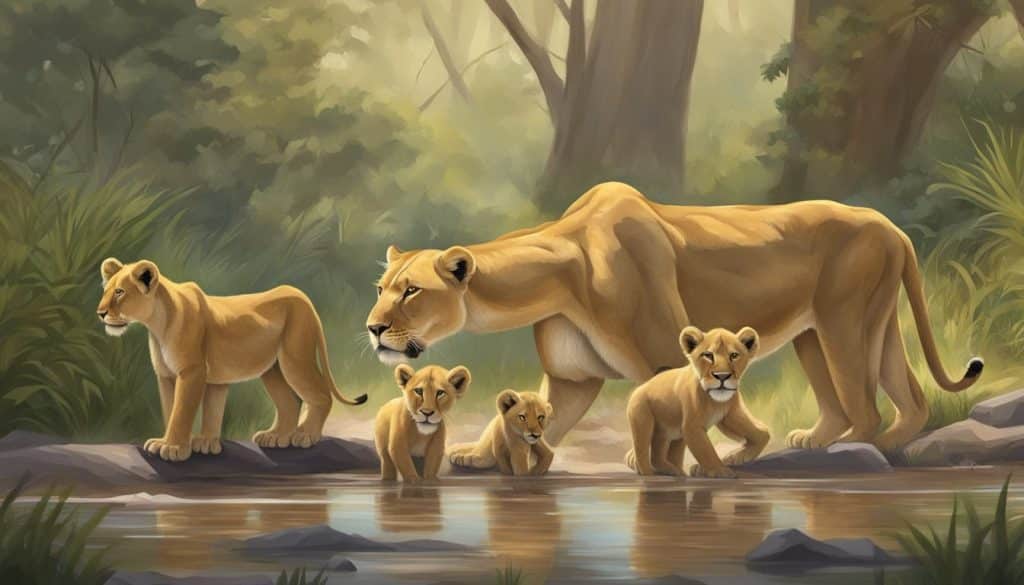
Young lion cubs transition from a milk-based diet and gradually learn the complex hunting techniques that adult lions use to secure food for the pride. The life of a lion cub is marked by a significant dietary transition and a rigorous learning curve to master the skills necessary for survival.
Weaning to Meat
Lion cubs are initially nourished by their mother’s milk, but this lactating period does not last long. They start weaning off milk at about three months of age and are introduced to meat by their mothers. By the time they reach their first year, lion cubs are primarily carnivorous, relying exclusively on meat for sustenance, and are adept at eating the prey brought down by older pride members.
Learning to Hunt
Lion cubs begin honing their hunting techniques as early as six weeks old. Initially, they observe the adults, particularly the lionesses who are skilled hunters, and mimic their behaviors. Cubs engage in play that mimics predatory behavior, which is vital for their development into competent hunters. By two years of age, their abilities are typically well-developed. At that time they can contribute to hunting with the pride. Despite being apex predators, lions rely on stealth, strength, and strategic teamwork to overpower their prey, which include antelopes, buffaloes, and even young elephants.
Challenges of Growing Up
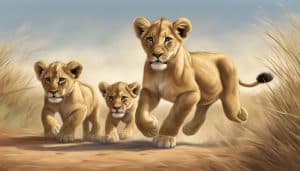
In the wild, lion cubs face a perilous journey to adulthood. They are marked by an array of challenges that test their ability to survive and thrive. The pride offers some protection, yet even within this seemingly secure environment, dangers loom that test the resilience of the young lions.
Threats from Within the Pride
Within the pride, lion cubs are vulnerable from their first moments. They need constant protection as infanticide can be a harsh reality. This happens when a new male takes over the pride and kills the existing cubs to bring the females back into estrus. Additionally, competition for food can lead to starvation, particularly in larger prides where the presence of multiple cubs can reduce the amount available to each individual.
- Infanticide by new males: A change in pride leadership can put all young cubs at risk.
- Competition for food: Cubs are dependent on their mother and pride for food, which can be scarce.
External Dangers
Beyond the pride, external threats add another layer of danger to a cub’s life. Predators such as hyenas pose a relentless threat; they will not hesitate to capitalize on young lions left unattended. Predation by these competitors can result in high mortality rates. Furthermore, environmental factors like drought can amplify the risk of starvation due to a lessened availability of prey for the lions to hunt.
- Persistent predators: Hyenas and other carnivores are a constant danger to young, unguarded cubs.
- Environmental challenges: Resource scarcity influences the likelihood of survival for the cubs.
By confronting these challenges head-on, the lucky cubs that do reach adulthood are well-prepared to continue the pride’s legacy.
Conservation and Threats
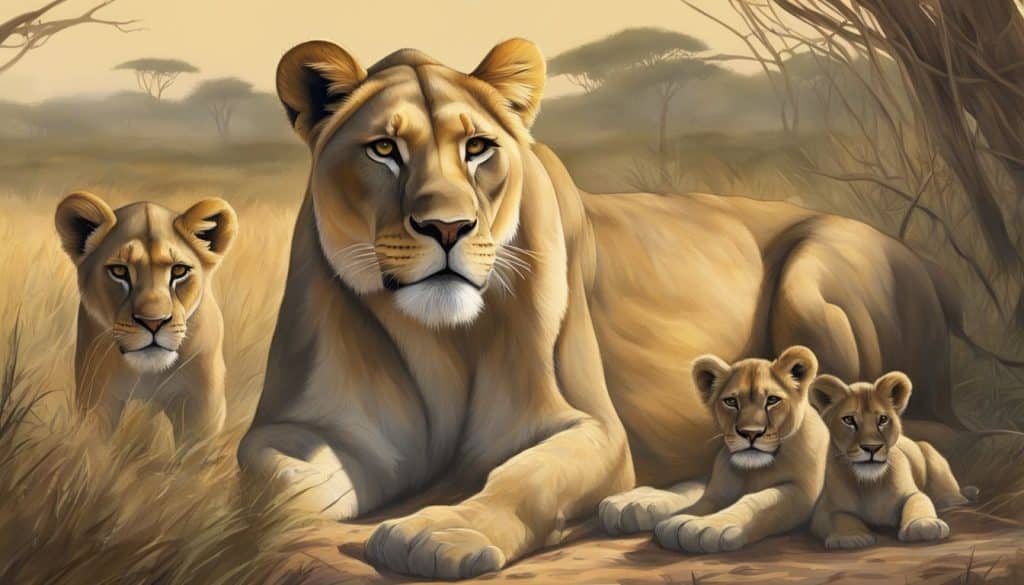
Lion cubs face significant challenges in the wild, stemming from both natural and human-induced factors. Conservation efforts are pivotal to sustain lion populations and mitigate the threats of habitat loss and diseases. These efforts aim to protect not only the cubs but the overall health of wildlife within their natural habitat.
Preservation Efforts
Efforts to conserve lion populations involve a range of strategies from legal protection to habitat management. Protected areas and wildlife reserves are established to maintain the species within their natural habitat. Organizations work on anti-poaching initiatives, community engagement, and collaborate with local authorities to enforce conservation laws. Additionally, scientific research contributes to conservation by monitoring lion populations and health, which is essential in formulating effective protection strategies.
Facing Extinction
The threats to lion cubs and their survival are alarmingly concrete. Habitat loss due to expanding human settlements and agriculture reduces the available space for lions to hunt and live. This encroachment also leads to more human-lion conflicts. Diseases such as canine distemper and bovine tuberculosis present deadly risks to individuals and can spread rapidly within a pride. As apex predators, lions are essential to their ecosystems, and their decline can have cascading effects on other wildlife species. Conservationists are clear-eyed about these threats and work tirelessly to avert the possibility of extinction.
Cultural Significance and Human Interaction
Lion cubs have been central to cultural lore and efforts to foster wildlife conservation. Their roles across various traditions underline their symbolic importance, while rising awareness underscores their fragility in the balance of the ecosystem.
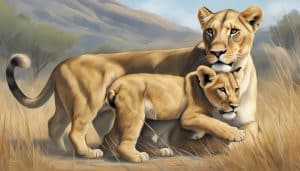
Lions in Tradition and Symbolism
Traditionally, the lion has been celebrated as the king of the jungle, representing strength and royalty across multiple cultures. Lion cubs are often depicted in art and literature as symbols of growth, potential, and the future continuity of this regal lineage. The image of a lion cub is pervasive in cultural narratives, signifying not only innocence and playfulness but also the promise of inheriting the grandeur associated with adult lions. For instance, in folklore and indigenous stories, lion cubs are featured as characters that learn valuable life lessons related to bravery and leadership.
Lions and Conservation Awareness
On social media and other platforms, images and videos of lion cubs play a significant role in fostering conservation awareness. These platforms harness the appeal of lion cubs to draw attention to the challenges facing lions in the wild, including habitat loss and conflict with humans. The spotlight on these vulnerable creatures helps to ignite public interest and support for conservation efforts. They serve to remind global audiences that every cub’s survival is critical for the health of lion populations and the overall biodiversity of their natural habitats. Conservation campaigns often use the allure of lion cubs to inspire a connection with wildlife, prompting collective action towards protecting their future.
Lion Cub Myths vs. Facts: Unveiling the Truth
The enchanting world of lion cubs is often shrouded in myths that distort our understanding of their real-life experiences in the wild and captivity. By separating fact from fiction, we aim to foster a deeper appreciation for these young predators and underscore the significance of their protection and conservation.
Myth 1: Lion Cubs Are Independent From Birth
Fact: Lion cubs are born blind and utterly dependent on their mothers for survival. This vulnerable period necessitates close maternal care, debunking the myth of their early independence. It’s only after a few weeks that they begin to explore their surroundings, still under the watchful eyes of their pride.
Myth 2: Cub Petting Supports Conservation Efforts
Fact: Contrary to popular belief, cub petting facilities often do not contribute to conservation. These establishments may separate cubs from their mothers prematurely to increase breeding rates and exploit the cubs for profit through interactive tourist activities, without genuine efforts toward reintroduction or conservation (African Lions).
Myth 3: Lion Cubs Are Safe to Interact With Because They Are Young
Fact: Even as cubs, lions possess natural instincts and can be unpredictable. The notion that their young age makes them safe for human interaction overlooks their wild nature and can lead to unsafe encounters.
Myth 4: All Lion Cubs Grow Up to Lead Prides
Fact: The future of a lion cub, especially a male, is uncertain. Male cubs must leave their birth pride upon reaching maturity, facing challenges to survive alone or attempt to take over another pride. Female cubs may remain with their birth pride but still face survival challenges .
Myth 5: Captive Lion Cubs Are Well-Suited for Reintroduction Into the Wild
Fact: Reintroducing captive-bred lion cubs into the wild is exceedingly complex and often unsuccessful. Cubs raised in captivity lack the essential survival skills taught by their mothers in a natural setting, making their transition to wild living difficult (African Lions).
Frequently Asked Questions
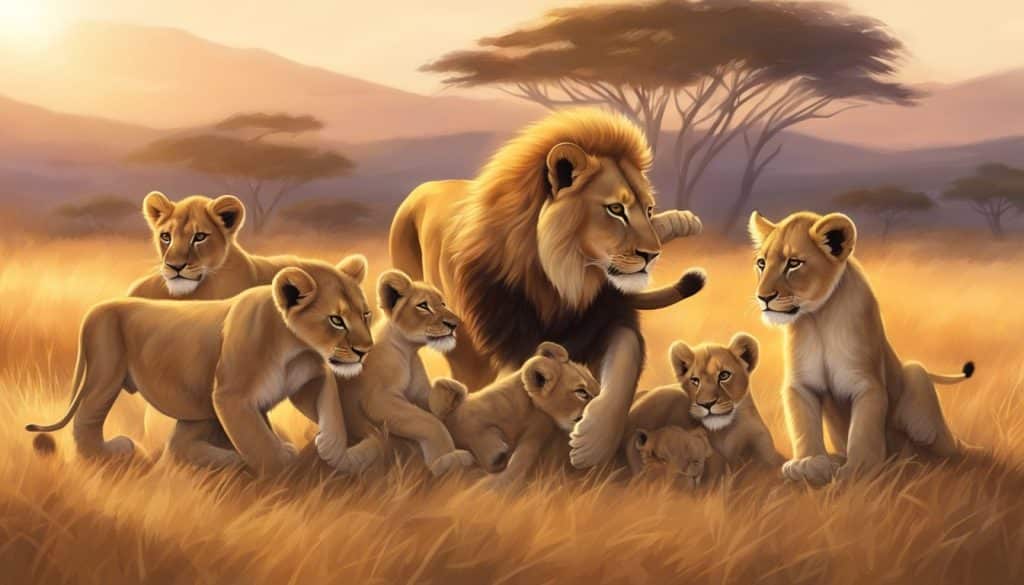
Here are a few common inquiries about lion cubs. This includes their development, diet, family dynamics, and challenges they face in the wild.
How long is the gestation period for a lioness?
Lion cubs start consuming meat at about three months old and are gradually weaned off their mother’s milk. They mainly feed on the prey hunted by the pride, which includes various animals such as wildebeest and zebras.
A lioness typically gives birth to two to three cubs at one time. However, litter sizes can vary from one to six cubs.
Lion cubs begin to learn hunting skills through play at a young age but actively participate in hunts with the pride around the age of one year.
Lion cubs face multiple threats, such as predation by other carnivores, including hyenas and rival lions, and challenges posed by human encroachment and habitat loss.
Lion cubs stay with their mother for about two years before becoming independent, though they may stay within the pride for much longer.

